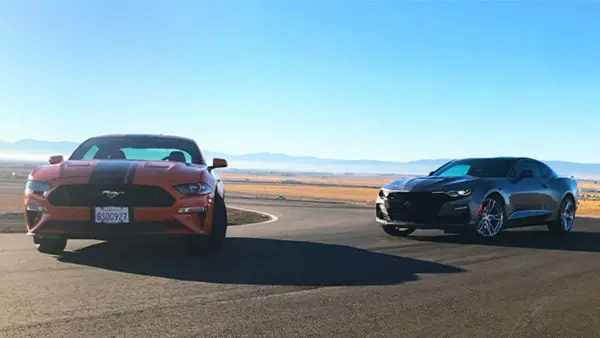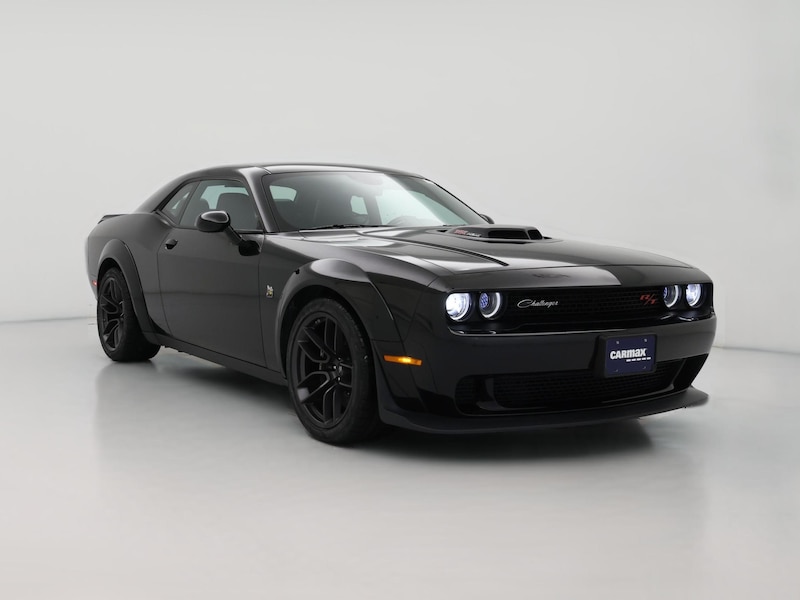2020 Ford Mustang review
Ford Mustang highlights
Customer rating
Pros
- Great driving experience
- Powerful V8 engine available
- Comfortable for longer drives
Cons
- Backseat is hard to access
- Doors are heavy
- Very small backseat
Mileage (EPA estimate)
12 city, 18 highway, 14 combined
Pricing for current inventory
From $23,998*
Shop with your budget in mind
Getting pre-qualified lets you shop with personalized monthly payments, and it doesn't impact your credit score.
Classic muscle car styling meets modern tech.
Whether you enjoy cruising with the top down or the performance of a fastback, the 2020 Ford Mustang delivers. Get all the classic muscle-car styling and sound combined with some of today's latest technology. While we do not currently have many 2020 Ford Mustangs on our lots, we look forward to selling more in the future. If you love the 2020 model, consider prior model years of the Ford Mustang with similar features.
All Ford Mustang years
Not sure what year to select? Learn about each Ford Mustang generation from 2012 to 2026
What is new for the 2020 Ford Mustang?
- New trim option added for enhanced customization
- All models now include advanced safety features as standard equipment
- Updated infotainment system with improved connectivity options
- Increased fuel efficiency ratings across all trims
- New premium audio system available in select trims
2020 Ford Mustang trims
Curious how Ford Mustang trims differ? Use our side-by-side vehicle comparison to see the differences and similaritiesEcoboost:
310-hp, 350-lb-ft of torque 2.3L
Smart Key
Rear View Camera
Overhead Airbags
Side Airbags
Traction Control
Power Mirrors
Cloth Seats
Cruise Control
Ecoboost Premium:
Includes all features available on the Ecoboost
A/C Seats
Front Seat Heaters
Leather Seats
Parking Sensors
Power Seats
GT:
Includes all features available on the Ecoboost Premium
460-hp, 420-lb-ft of torque 5.0L
GT Premium:
Includes all features available on the GT
No significant upgrades found on the GT Premium
Bullitt:
Includes all features available on the GT Premium
480-hp, 420-lb-ft of torque 5.0L
Lane Departure Warning
Heated Steering Wheel
Shelby GT350:
Includes all features available on the Bullitt
526-hp, 429-lb-ft of torque 5.2L
Shelby GT350R:
Includes all features available on the Shelby GT350
No significant upgrades found on the Shelby GT350R
Shelby GT500:
Includes all features available on the Shelby GT350R
760-hp, 625-lb-ft of torque 5.2L
Leather & Suede Seats
Supercharged Engine
Ford Mustang photos
1. Mustang track apps
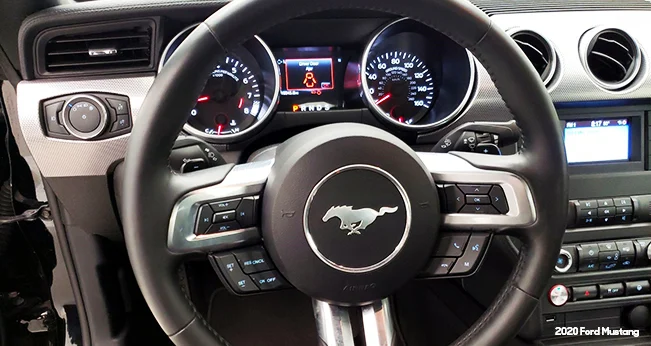
You don't need to rely on extra hardware and third-party apps for your track data anymore. The 2020 Ford Mustang has an available suite of tools to track the crucial times and data you need to lower track times or shave milliseconds off your quarter-mile times. Focus on driving instead of a stopwatch by using the built-in Lap Timer. Measure your quarter-mile speed with the app when you’re on the go!
2. Classic muscle car look and feel
Are you looking for a taste of nostalgia while taking advantage of the decades of advancements? The 2020 Ford Mustang is a textbook muscle car. It's available as a two-door, rear-wheel-drive fastback or convertible. A powerful engine up front and smoking wheels at the back is a recipe for fun that is time-proven. While it looks and feels like a throwback, the 2020 Ford Mustang is still a capable and modern road machine.
3. Modern driver assists
While the 2020 Ford Mustang may have kept that classic shape, it has some of the most current available driver assists. Included in the Ford driver-assist package is forward pre-collision braking assist. The package also adds adaptive cruise control, lane-keep assist, rain-sensing wipers, and automatic high beams. Standard on the EcoBoost® Premium and GT Premium is blind-spot monitoring. A rearview camera is standard on all 2020 Ford Mustangs.
4. Exciting power
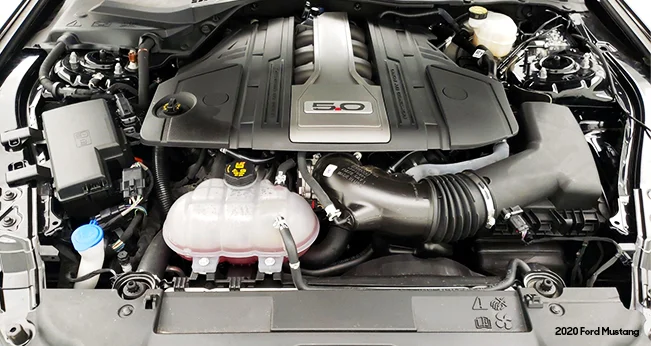
There is an engine for everybody available on the 2020 Ford Mustang. Even the base-model turbocharged 2.3L four-cylinder is no slouch, making an impressive 310 hp. The GT350 and GT500 trim set the pace for performance and hp, featuring a 526-hp and 760-hp 5.0L V8 engine. A six-speed manual is standard on all 2020 Ford Mustangs, except the GT500, in case you're looking for a car that gives you full control.
5. An interior with style
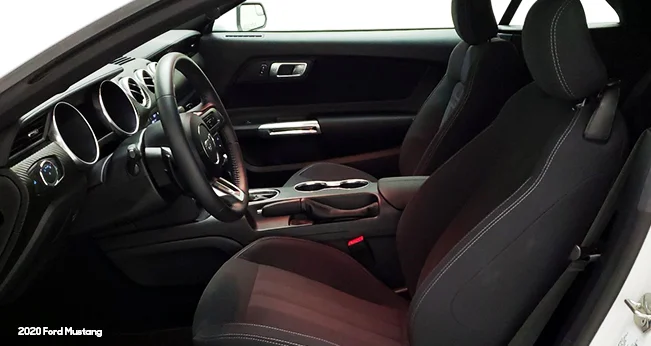
You don't have to know the Mustang style to understand that the 2020 Ford Mustang interior is stylish. There's up to 13.5 cu-ft of trunk space for your stuff. The six-speed manual shifter and control buttons blend modern and vintage design. Large, comfortable front seats feature accent stitching and have a great ergonomic feel. The cabin is filled with impressive sound thanks to an available 12-speaker B&O® sound system.
2020 Ford Mustang video review
The Ford Mustang is an American muscle car that has been roaming the U.S. highways for over 50 years. The latest generation of Mustangs, which was kicked off in 2015 with a full redesign, is one of the best ever. But is a used Ford Mustang the right car for you? In this video, Travis Langness reviews the 2020 Ford Mustang, gives his insight into how it handles on the road, and shares what he likes and dislikes about Ford's popular muscle car. Travis also takes a look at the Mustang's interior and talks about all the features and tech it has to offer. So if you're interested in buying a used muscle car, or just want to know more about the Ford Mustang GT, Travis has you covered. This is our review of the 2020 Ford Mustang GT Premium.
Similar vehicles
If you're interested in the 2020 Ford Mustang, you should also check out these similar vehicles from Previous generation years.
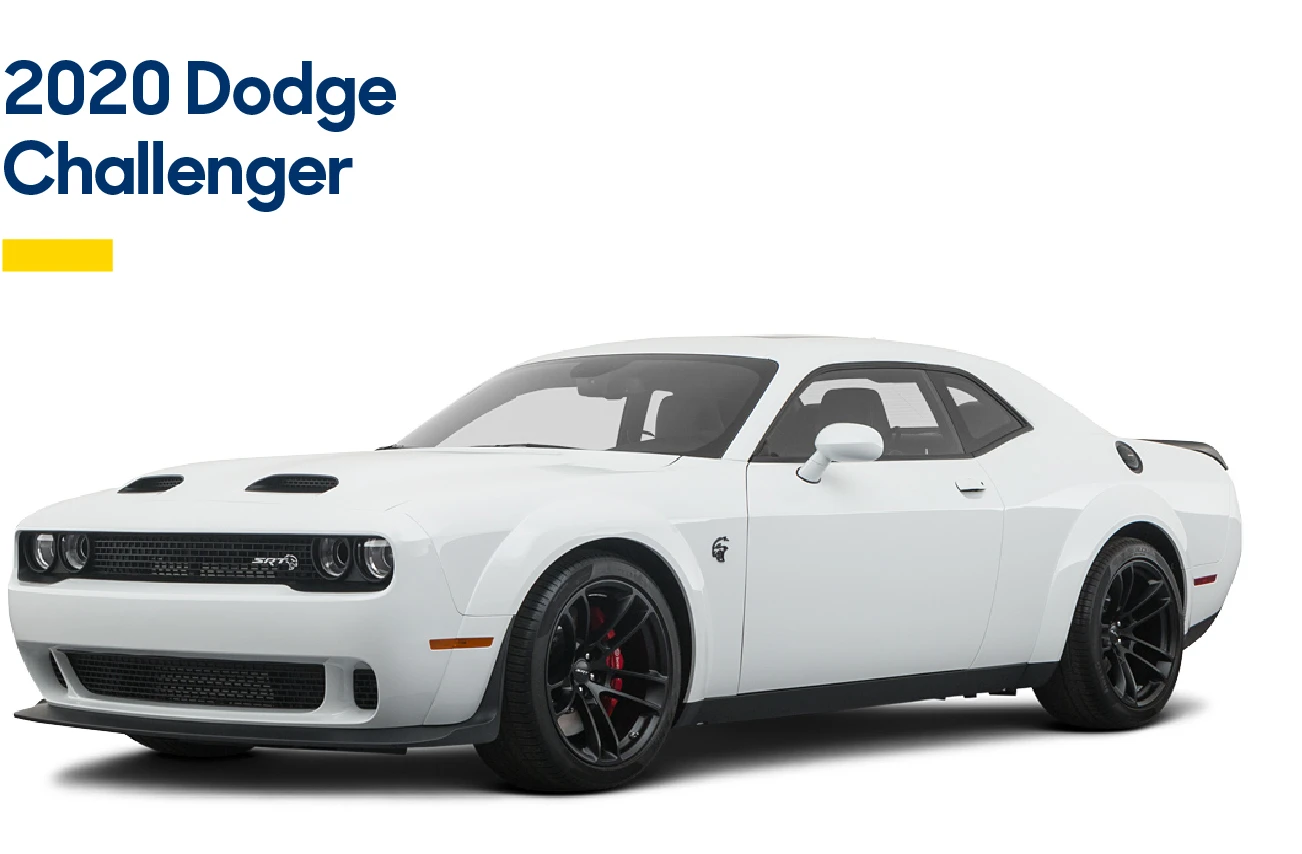
The only way to make many other muscle cars feel slow is to compare them to the Hellcat. The 2019 Dodge Challenger is available in eight different trims—three of which are HEMI® V8s found in the R/T and SRT Hellcat models that range in whiplash-inducing power, up to 797 horsepower with 707 lb.-ft. of torque in the Redeye. Depending on the trim, the Challenger is available in either rear-wheel or all-wheel drive and features various performance upgrades and heritage styling cues, such as a dual-snorkel hood and fender flares. The 2019 Dodge Challenger offers seating for five and 16.2 cubic feet of storage capacity in the cargo area.
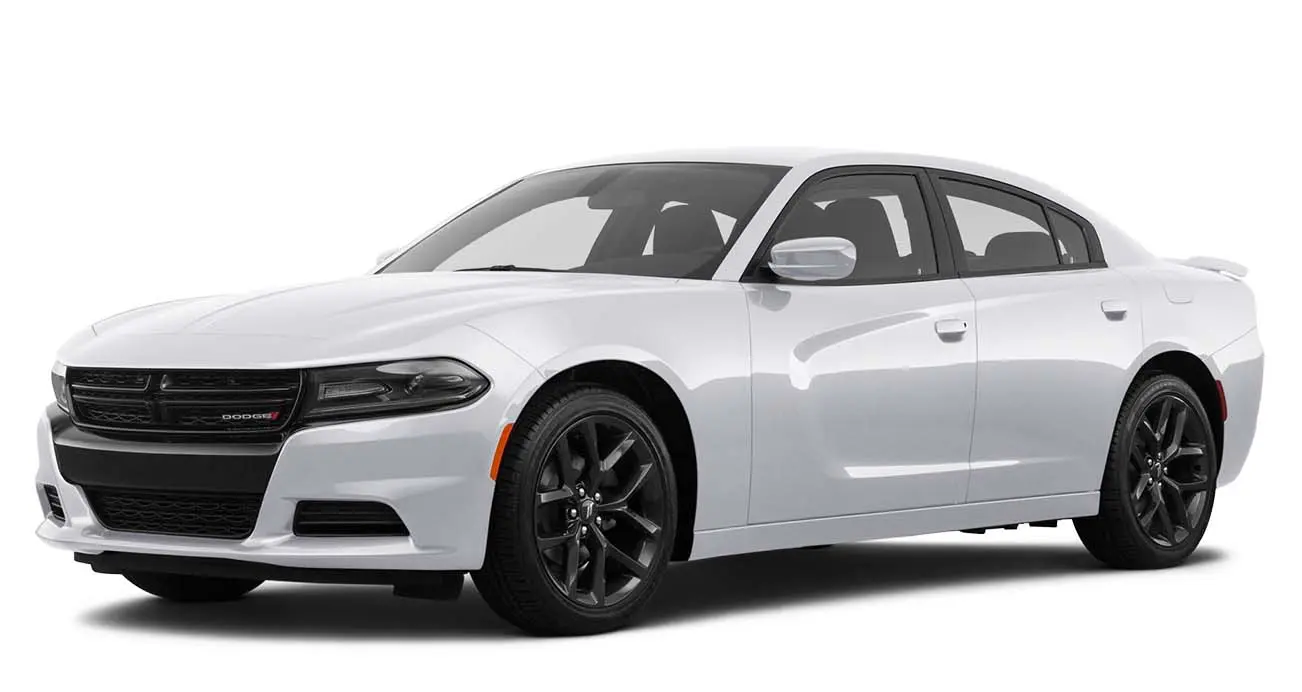
Dodge Charger
Built on the same platform as the Challenger and sharing many of the same standard features and engine options, you can't go wrong with the Dodge Charger. Just like the Challenger, the base 3.6L-V6-powered 2019 SXT comes standard with 17-inch alloy wheels, a push-start ignition, remote start system, and automatic headlights with LED daytime running lights. On the inside of the 2019 Charger expect a six-way power adjustable driver seat with cloth seating, a leather-wrapped steering wheel, and a seven-inch touchscreen with Bluetooth® and Apple CarPlay and Android Auto connectivity.
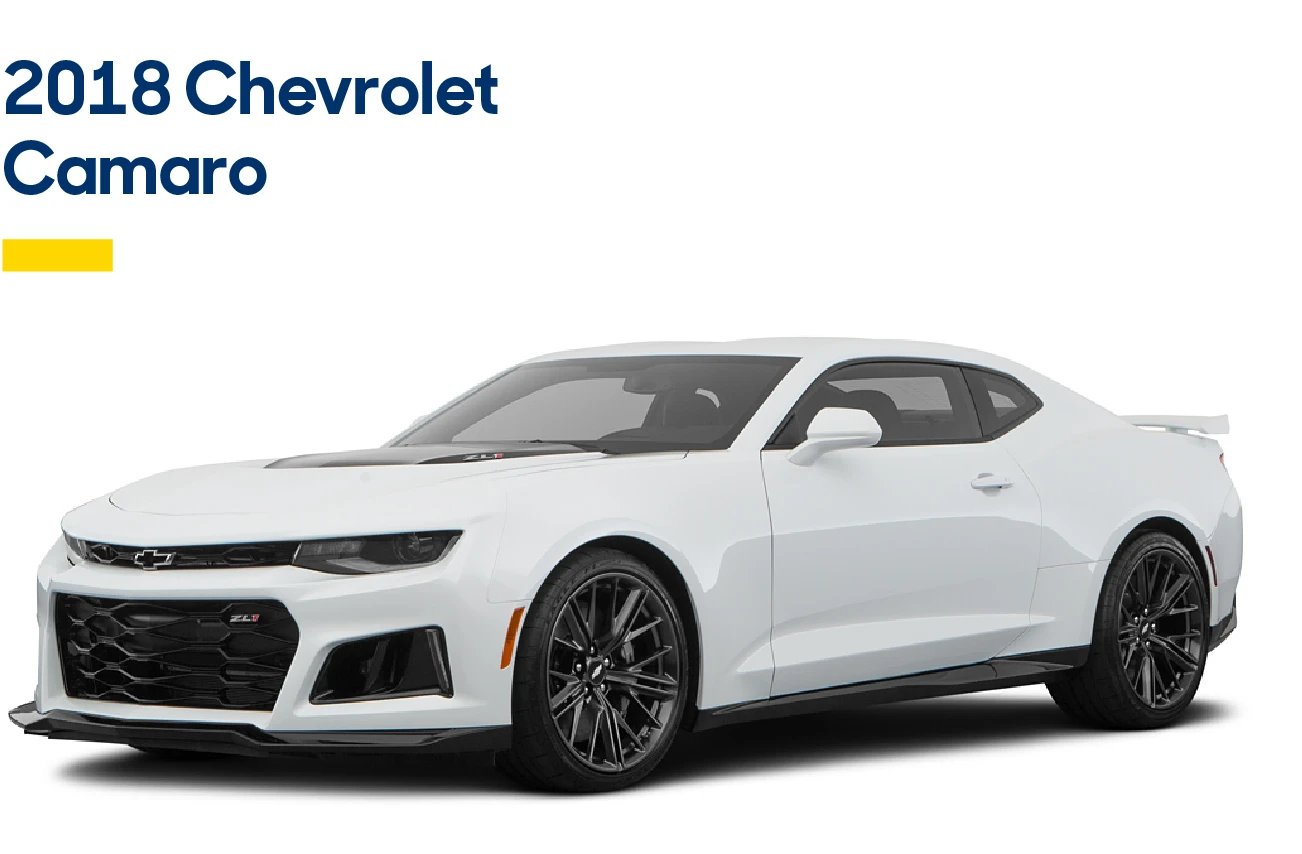
The 2019 Chevrolet Camaro is available as a rear-wheel-drive coupe or convertible in a range of trims that offer styling, power, and performance upgrades. Standard on the LS and LT models is a turbocharged 2.0L, four-cylinder engine that produces 275 horsepower and 295 lb.-ft. of torque paired with either a standard six-speed manual or optional eight-speed automatic transmission with paddle shifters. Other powertrain options include a 335-horsepower 3.6L six-cylinder engine on the LT, a 455-horsepower 6.2L eight-cylinder engine on the SS trims, or a 650-horsepower 6.2L V8. The 2019 Chevrolet Camaro is as robust in the cabin as it is under the hood. It's equipped with a standard seven-inch or available eight-inch touchscreen infotainment system compatible with Apple CarPlay and Android Auto. Cargo capacity in the trunk is a little tight with 9.1 cubic feet in the coupe and 7.3 cubic feet in the convertible.
Shop with your budget in mind
Getting pre-qualified lets you shop with personalized monthly payments, and it doesn't impact your credit score.
Ratings & reliability
Customer ratings
4.6 out of 5
22 customer reviews| 5 Stars | 20 |
|---|---|
| 4 Stars | 0 |
| 3 Stars | 0 |
| 2 Stars | 0 |
| 1 Star | 2 |
RepairPal gave the Ford Mustang an overall reliability rating of 4 out of 5 stars, which RepairPal describes as Above Average. This rating ranks Ford Mustang 23rd out of 28 among Midsize Cars.
View RepairPal's full rating of the Ford MustangFord Mustang features and specs
Curious how Ford Mustang trims differ? Use our side-by-side vehicle comparison to see the differences and similarities
GT Premium 2D Convertible 2WD
Standard Features
- Power Seat(s)
- Power Mirrors
- Smart Key
- Power Windows
- Parking Sensors
- Traction Control
- Air Conditioning
- ABS Brakes
- Rear View Camera
- Cruise Control
- Power Locks
- A/C Seat(s)
- Leather Seats
- Front Seat Heaters
- Side Airbags
- Rear Defroster
- Memory Seat(s)
- Lane Departure Warning
- Remote Start
- Soft Top
- Alloy Wheels
- Rear Spoiler
- Automatic Transmission
- AM/FM Stereo
- Satellite Radio Ready
- Sync System
- Auxiliary Audio Input
- Apple CarPlay
- Android Auto
- Bluetooth Technology
- Memory Seat(s)
- Leather & Suede Seats
- Automated Cruise Control
- Heated Steering Wheel
- Remote Start
- Lane Departure Warning
- 20 Inch Plus Wheels
- Rear Spoiler
- CD Audio
- Bang & Olufsen Audio
- Navigation System
Drive Wheels
2WD
Engine size
5.0L
Horsepower
460
Torque (ft-lbs)
420
Engine type
Gas
Fuel capacity
16
Wheelbase
107.1"
Overall length
188.3"
Width
75.4"
Height
54.9"
Leg room
F 44.5"/R 30.8"
Head room
F 37.6"/R 35.7"
Front tires
P235/50WR18
Rear tires
P235/50WR18
Seating capacity
4
Transmission
Automatic
2020 Ford Mustang FAQ
Modern Mustangs offer a broad range of appealing characteristics. Of course, muscular performance tops the list, but easy-to-use controls, a comfortable ride quality and high-tech driver aids are all still on the menu too. The Ford Mustang is currently in its sixth generation that debuted for the 2015 model year. It's sold as either a two-door coupe or two-door convertible with a fabric top. Both have seating for four.
Ford has made some updates since 2015. The most notable year to be aware of is 2018 when the Mustang received refreshed styling, revised suspension tuning and powertrain enhancements. Ford also made a few updates to standard and available equipment for 2020, but in general the 2018-2020 models are pretty similar.
The Mustang is quick in a straight line and enjoyable to drive with either the four-cylinder or the V8 engine. With the V8, everything is just dialed up more intensely.
The six-speed manual is easy to shift, and the 10-speed automatic has quick and smooth shifts, even when driven aggressively.
Steering and handling are impressive. The steering wheel feels appropriately light around town and gains a bit of additional weight at speed. On base models, the Mustang's handling is capable and relatively flat through corners. Add any of the high-performance options that increase cornering performance and you've got a thoroughly entertaining car on your hands.
The Mustang's front seats are firmly padded but well-bolstered and comfortable enough to be used in daily driving. Ride comfort is generally impressive. Small road imperfections are easily soaked up, and the available adaptive suspension is well-suited to high-performance driving.
The Mustang's interior is optimized for the driver. A good range of adjustment from both the steering wheel and the driver's seat make for optimal driving position on long road trips, short commutes, or during more enthusiastic driving. The front of the cabin is spacious and forward visibility is better in the Mustang than in most rivals.
Getting in and out of the Mustang is easy if you're in a wide-open parking lot, but the doors are long, and opening them completely when you're parked next to other cars is difficult. Also, the Mustang's focus on performance and style does compromise rear seat space. Even small children will have a hard time getting into and then getting situated in back.
Thankfully, the interior is well-built. There are a few hard and hollow plastics used in the interior construction, especially on lower trim levels, but they're mostly out of the way. What does that mean? Well, essentially it means that the cheap stuff isn't located on surfaces you touch a lot like the window switches or the dashboard controls -- it's relegated to aesthetic-only trim pieces. The interior layout is relatively simple too, and most of the buttons and knobs are easy to reach and use.
There are two main infotainment systems for the 2020 Ford Mustang. Standard on EcoBoost and GT trim levels is a 4.2-inch center screen. Bluetooth audio and phone connectivity are standard.
But to get the more helpful Apple CarPlay and Android Auto smartphone integration systems you have to upgrade to the EcoBoost Premium or GT Premium trim levels. That upgrade also comes with a larger 8-inch center touchscreen and Ford's Sync 3 infotainment software. Voice controls on the Sync system are quick to respond to commands and they understand natural language well.
Advanced driver aids such as adaptive cruise control, lane-keep assist and forward collision warning are all optional for the Mustang. In general, they operate smoothly and keep false alarms to a minimum.
The Ford Mustang's cargo space is average compared to its main rivals. The Mustang coupe has 13.5 cubic feet of cargo storage in the trunk, which is good enough to fit a few carry-on-style suitcases plus a bit more. The Camaro has a paltry 9.1 cubes and the Challenger offers 16.2 cubes. In the convertible, it's a similar story. The Mustang convertible offers 11.4 cubes, with the Camaro only measuring 7.3 cubes. There is no convertible version of the Challenger.
It's best to think of the Mustang as a two-seater that can carry a friend or a small child on short journeys only. Regular use of the back seat will reveal just how cramped it is. Treat the back seat like extra storage, however, and it's a bit more appealing.
Up front, there's similarly limited space when it comes to cupholders and small cubbies. The Mustang's center console is merely OK and the door pockets are slim and have compromised openings. The cupholders will hold regular soda cans or small water bottles, but you'll have to hold onto larger drinks yourself.
More about the 2020 Ford Mustang
Color options
Exterior colors
Dark Highland Green (Bullitt)
Ford Performance Blue (GT350, GT500)
Grabber Lime
Iconic Silver
Kona Blue
Magnetic
Oxford White
Race Red
Rapid Red Metallic Tinted Clearcoat
Shadow Black
Twister Orange Metallic Tinted Tri-Coat
Velocity Blue
Interior details
13.5 cu-ft of trunk space in the fastback, or 11.4 cu-ft in the convertible.
Four passengers of seating.
Leather seating in Bullitt, GT350, and GT500 models.
Racing front seats in are standard in Bullitt, GT350, and GT500 trims.
Front-driver and passenger-center cup holders.
Research other vehicles
- ford mustang used car value
- 1994 ford mustang used car value
- 1995 ford mustang used car value
- 1996 ford mustang used car value
- 1997 ford mustang used car value
- 2001 ford mustang used car value
- 2002 ford mustang used car value
- 2003 ford mustang used car value
- 2004 ford mustang used car value
- 2005 ford mustang used car value
- 2006 ford mustang used car value
- 2007 ford mustang used car value
- 2008 ford mustang used car value
- 2009 ford mustang used car value
- 2010 ford mustang used car value
- 2011 ford mustang used car value
- 2012 ford mustang used car value
- 2013 ford mustang used car value
- 2014 ford mustang used car value
- 2015 ford mustang used car value
- 2016 ford mustang used car value
- 2017 ford mustang used car value
- 2018 ford mustang used car value
- 2019 ford mustang used car value
- 2020 ford mustang used car value
- 2021 ford mustang used car value
- 2022 ford mustang used car value
- 2023 ford mustang used car value
- 2024 ford mustang used car value
- Used Ford Mustang near me for sale
- Used 2020 Ford Mustang near me for sale
- Used Ford Mustang Bullitt near me for sale
- Used 2019 Ford Mustang Bullitt near me for sale
- Used Ford Mustang Ecoboost near me for sale
- Used 2020 Ford Mustang Ecoboost near me for sale
- Used 2021 Ford Mustang Ecoboost near me for sale
- Used Ford Mustang GT near me for sale
- Used Ford Mustang GT Premium near me for sale
- Used Ford Mustang with Memory Seat(s) near me for sale
- Used Ford Mustang with Navigation System near me for sale
- Used Ford Mustang Shelby GT350 near me for sale
- Used Ford Mustang Shelby GT500 near me for sale
- Used Silver Ford Mustang near me for sale
- Used Ford Mustang Sports Cars near me for sale
- 2024 Chevrolet Camaro review
- Dodge Challenger
- 2019 Dodge Charger review
- All things EV
- Used Ford buying guide
- 2025 Ford Mustang review
- 2013 Ford Mustang review
- 2014 Ford Mustang review
- 2015 Ford Mustang review
- 2018 Ford Mustang review
- 2022 Ford Mustang review
- 2023 Ford Mustang review
- 2024 Ford Mustang review
- 2018 Jeep Wrangler review
- 2019 Jeep Wrangler review
- 2015 Kia Optima Hybrid review
- 2016 Kia Optima Hybrid review
- 2017 Kia Optima Hybrid review
- 2012 Land Rover Range Rover Evoque review
- 2013 Land Rover Range Rover Evoque review
- 2014 Land Rover Range Rover Evoque review
- 2015 Lexus ES 300h review
- 2019 Mercedes-Benz GLE43 AMG Coupe review
- 2025 Mercedes-Benz GLE450 review
- 2016 Mercedes-Benz GLE450 AMG review
- 2025 Toyota Corolla Hybrid review
- 2018 Toyota Corolla iM review
- 2025 Toyota Crown review
- 2019 Volkswagen Golf Electric review
- 2013 Volvo C70 review
We hope you found this information helpful. This content is intended to inform and is not meant to indicate that a particular vehicle is currently available or recommended for you.
Statements of fuel economy or EV range are based on EPA and other third-party estimates for vehicles when new. Fuel economy and EV range will degrade with time and vary based on age, driving conditions, vehicle history, and other conditions. See fueleconomy.gov for more info.
Unless otherwise noted, information related to featured vehicles comes from third-party sources, including manufacturer information. Product and company names may be trademarks or registered trademarks of third-party entities. Use of them does not imply any affiliation with or endorsement by these entities. By clicking on any video links, you will be taken to a third-party site maintained by YouTube, Inc.
We make every effort to provide accurate information, but please verify before purchasing.



